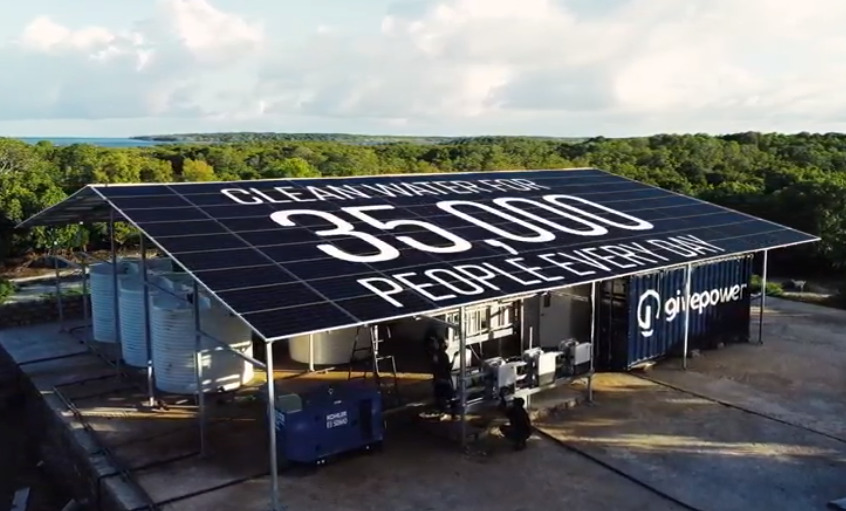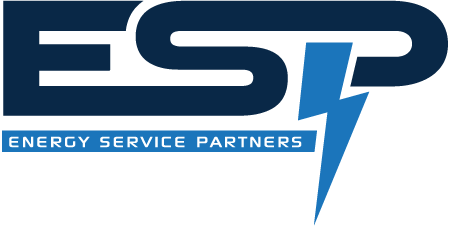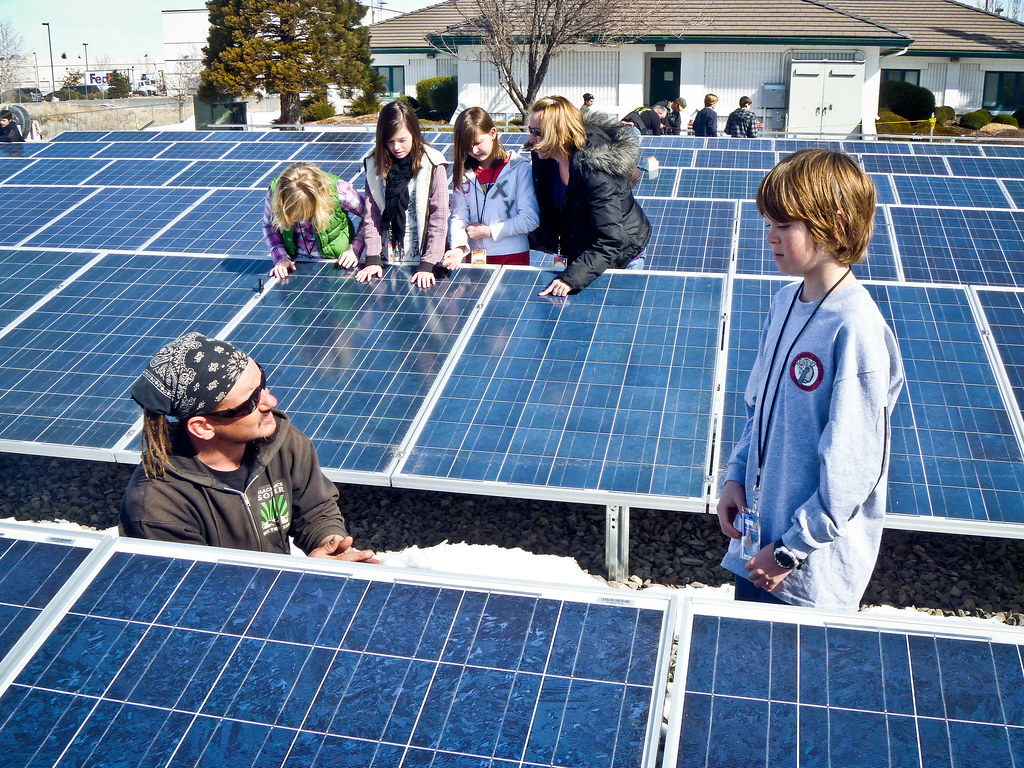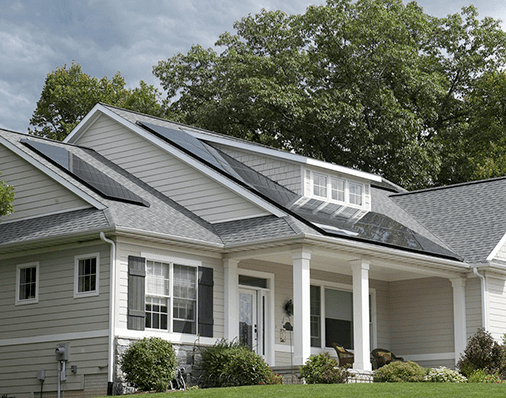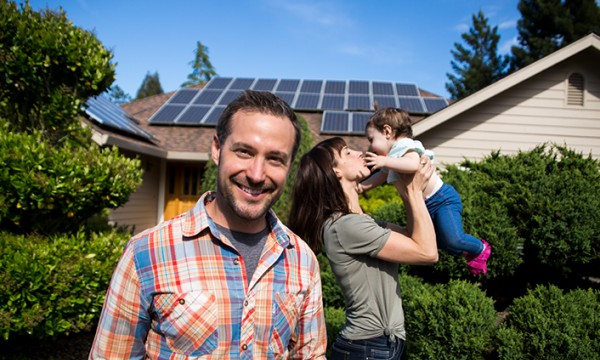Face it, we’re done with the June Gloom. The cooler temperatures have been nice but with kids out of school and the beach, local lakes or rivers calling, it is time for the weather to cooperate. Soon enough, it will. When it does, energy costs peak, too.
When summer heat hits, more householders will likely spend at least part of the day indoors. Kids we be tethered to their electronics, air conditioning units will be buzzing 24/7, home electronics, refrigerators, washers, dryers and all-things-electric on the continuous “on” position — creating a demand for more energy.
For those on the grid, summer is the time to bump up the side hustle and jot down these money-saving tips. For those of us who generate our own energy, unless we supersized our system, we will experience the highest draws on our local utility grids but the good news is that there are ways to make sure you draw the least amount of energy possible.
Here are some helpful summer energy-saving suggestions:
Set Your Thermostat at 78-degrees
Yeah, we know, it feels great to walk into a crisp, cool home after a few hours in the sweltering California, Arizona or Nevada sun. Gone are the days of set the thermostat to 68-degrees and go. Today’s utility rates soar with each degree below 72-degrees, the common default temperature. And, the general rule of thumb is that for every degree above 72 that you can tolerate, you save up to 3% per degree. If you don’t have a programmable thermostat, you might consider investing in one for longer-term savings.
Think Deep South and Install Ceiling Fans
If you don’t have a ceiling fan, some attractive and inexpensive models are available at your local DIY big box stores. Or, if you don’t want to bother with a permanent installation, portable fans are an easy alternative. Both will propel cool air provided by your air conditioning system, providing a bigger bang for your buck. Fans will allow you to run your air conditioning a bit warmer, saving on energy costs and maximize on the cool air already in your home by circulating it more effectively.
Energy experts advise that saving energy with ceiling fans relies on three practices:
- Turning off the air conditioner when ceiling fans alone will do the trick
- Setting the thermostat to a higher temperature by using ceiling fans to keep cool
- Turning off ceiling fans in unoccupied rooms
If you do all those things, the most optimistic projections show that you might cut your air conditioning bill by 15% but actual cost savings will vary on several other factors.
Break out the Cold-Water Laundry Detergent
If you don’t do this already, consider washing with cold water. There are a great number of cold-water detergents that not only help you save energy when doing your laundry but contribute to the longevity of your clothes and bedding. Almost all the energy draw by your washer is used in heating water to run a load. If you don’t want to use cold water, you can always use the warm setting. For further savings, think grandma and old school line drying. Not only do your clothes dry naturally using no energy, line-dried clothes have a delightfully fresh smell that is natural and nice than what you get from sheets of packaged fabric softener.
In fact, this is a practice we might consider adopting year-round. According to Treehugger, each load of laundry washed in warm or hot water is the equivalent of driving over 3,500 miles. When we wash at warmer temperatures, we emit roughly 2,400 pounds of CO2, slightly over a metric ton that is the equivalent of one cross-country round-trip flight.
Draw the Shades When You’re Not Home
This is common sense, but you’d be surprised how many people forget that blinds are not just a decorating item. The same goes for curtains and shutters. If you know that you’re going to be away from your home for an extended number of hours and the sun blaring down on your living room, an easy way to bring down the temperature while you’re away is to simply draw the shades. Even if you’re home and not using a south-facing room, simply cause shade to drop the temperature. When the temperature drops in the evening, open the windows and let some fresh air in. Make it a morning ritual to close windows as the temperature starts to heat up.
Add Shrubs and Strategically Placed Trees to Create Shade
You can always augment your existing landscaping with strategically placed new shrubs and trees to cause more natural shade by blocking sunlight savings hundreds of dollars in cooling costs per year, when done right.
Use Cold Water and Let Your Dishes Air Dry
Unless your dishes are filthy from trying a new recipe, you didn’t get quite right, most dishes can be safely washed by hand with cold water, rinsed and let to air dry. Or, if you don’t have the discretionary time to hand wash, you can always set your dishwasher to cold wash and air dry rather than consume precious energy to heat water and heat dry.
Put Some Shrimp on the BBQ
It doesn’t have to be shrimp but consider cooking outside during the summer whenever possible. Nothing is more stifling that cooking in a hot kitchen when it is 90-degrees outside. Depending on how many burners you have going on at the same time. Most of us don’t bake often during the summer – and rightfully so – as temperatures rise considerably with each heat source put in use. Cooking outside allows heat to dissipate and is a lot of fun. Forget the crockpot, it uses double the energy.
Be Mindful of Your Thermostat
When you place computers, stereos, flat screens, lamps or other heat-producing devices near your air conditioning thermostat reads the heat coming for each source. The thermostat “thinks” your room is warmer than it really is and in response it pumps more energy into the system to cool your home. To save energy, remember to relocate your electronic devices away from thermostats and to keep them on the off position when not in use.
Do You Have Helpful Energy Saving Tips?
We’ll publish other helpful energy saving tips from time to time. If you have suggestions to share that work for you, please share your ideas here. Here are some more energy saving tips from Southern California Edison.
